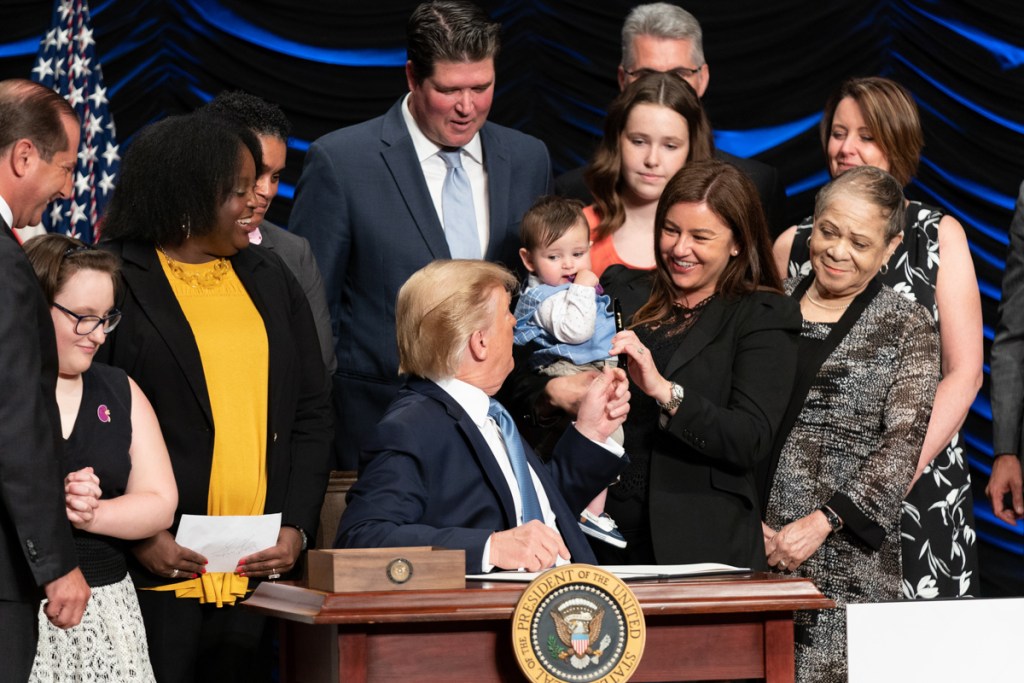A Santa Barbara family took center stage Wednesday during Donald Trump’s signing of an executive order to overhaul the country’s kidney treatment industry. Andrew and Jamie Nash, holding their one-year-old son, Hudson, who was born with significant damage to both of his kidneys, stood behind the president as he announced a sweeping set of reforms aimed at lowering care costs, developing new treatments, and improving the donor system.
But before Trump planted a kiss on Hudson and placed pen to paper, Jamie was invited to speak at the podium at the Ronald Reagan building. “Kidney care is very dear to our hearts,” she said, describing Hudson’s medical condition and the constant care it requires. “To keep him going, he takes numerous medicines, receives multiple shots, blood draws, and more doctors’ visits than I can count.” Hudson will go on dialysis until he’s big enough to receive a transplant, Jamie said, hopefully in the next year. Even after that, it’s a disease he’ll deal with forever, “never going more than three months without a blood draw and multiple medicines twice a day.”
Wednesday’s announcement was a “game-changer for what Hudson’s life could be like,” Jamie told the Independent. She ticked off the ways it could help her son and the 37 million other Americans who struggle with chronic kidney disease, which costs Medicare $113 billion a year, a staggering one-fifth of all Medicare spending.
Among the White House’s initiatives are increasing the supply of donated kidneys by allowing reimbursement of lost wages and other expenses for living donors; making it easier for patients to receive dialysis in the comfort of their own homes; changing Medicare to provide a financial incentive for doctors and clinics to help patients stave off end-stage disease; and prioritizing the development of an artificial kidney. Many of the changes are taking place through Medicare’s Innovation Center, created under the Obama-era Affordable Care Act.
A main goal of Trump’s order is to improve detection and diagnosis of kidney disease and reduce the number of kidney failure cases by 25 percent by 2030. According to the Centers for Disease Control and Prevention, 96 percent of people with kidney damage or reduced function don’t know they have a problem, and of the 100,000 Americans who start dialysis annually, half die within five years.
The order also incentives treatment centers to modernize the organ transplant system. White House officials said it may be possible to find 17,000 more kidneys every year from deceased donors. Right now, there are more than 94,000 people on the national organ waiting list in need of a kidney. Last year, only 21,000 received transplants.
Jamie said the event was a rare and refreshing bipartisan effort to address a medical issue that affects so many Americans. Politics didn’t feel part of it, she said, and you have to admire the White House for taking such an important step, no matter how you feel about the president. The administration said it was the first kidney-focused executive order since the 1970s. “It was long overdue,” Jamie said, “but I’m glad they’re making such a huge change now.”
The Nash family has also created a Facebook page sharing Hudson’s story and asking for volunteer donors. Find it here.

